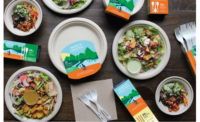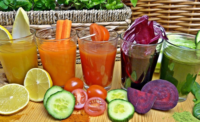The demand for sustainable products and packaging is only growing. With continuous innovations to packaging technologies, brands have many options for improving their packaging and reaching sustainably minded consumers.
But, it can be hard to know where to start, especially with the many misconceptions about what makes packaging sustainable.
Here are a few sustainability myths and what you should consider as you make your packaging decisions.
Myth 1: Plastics Aren’t Sustainable
Plastic’s bad rap has rapidly increased in the past few years and may have brands reluctant to move to options like flexible plastic packaging.
If you look at the life cycle of flexible pouches, they actually have a smaller carbon footprint compared to rigid materials like glass. According to a 2018 study commissioned by the Flexible Packaging Association (FPA), a glass jar for baby food has a carbon impact 3 times higher than that of a flexible stand-up pouch with a fitment. Despite glass’ recyclability, seven times more material ends up in municipal solid waste than the flexible pouch.*
However, you should consider the differences between rigid and flexible plastics, as well. A plastic pail for cat litter packaging requires 11 times the material of a flexible package and uses 1,429% more fossil fuel in manufacturing, so there are benefits to be gained even when choosing between plastics.
Myth 2: Recyclability is the Key to Sustainability
To both packagers and consumers, fully recyclable packaging is the ideal sustainable solution.
Although it’s a goal we should continue to pursue, recyclability is just one component of sustainability. We should also consider the life cycle of different packaging options to understand their full environmental impact. For example, the FPA study also shares that a steel can for packaging coffee consumes 16 times as much water as a flexible pouch, primarily during the material development stage. While the can is recyclable and seems more sustainable on the surface, the water consumption required to produce it could negate benefits gained from recyclability.
That means when you’re looking for a sustainable solution, you should also consider fuel use, product-to-package ratios, the amount of materials ending up in landfills, and other factors. When packaging improves all of these areas and can also be recovered and regenerated into a secondary life, you achieve a truly sustainable package.
That means when you’re looking for a sustainable solution, you should also consider fuel use, product-to-package ratios, the amount of materials ending up in landfills, and other factors. When packaging improves all of these areas and can also be recovered and regenerated into a secondary life, you achieve a truly sustainable package.
Myth 3: Compostable Means Sustainable
Much like the recyclability myth, it’s easy to assume that compostable packaging is sustainable. One may think when composted properly, it would avoid the waste stream and become a beneficial soil amendment.
However, the Institute of Food Technologists (IFT) states that only 4% of U.S. households have access to curbside composting**, which means compostable packaging frequently end up in landfills, where they may produce methane as they degrade. If they are tossed in with recyclables, they could cause issues if mixed with polyethylene and reprocessed. At present, we definitely need more innovation and development of recovery infrastructure in order to gain the full benefit of compostable packaging as a sustainable option.
What’s Your Sustainable Packaging Goal?
Sustainability means different things to different companies. Where one packager may define sustainability as avoiding greenhouse gases, another may define it as reducing food waste. With recent packaging innovations such as recyclable films and closures hitting the market, it’s important to understand the true environmental impact of all packaging so you can choose the option that most closely aligns with your sustainability goals. That’s how real progress can be made.
*A Holistic View of the Role of Flexible Packaging in a Sustainable World, PTIS, 2018
**The Complexities of Compostable Food Packaging, IFT, 2019




